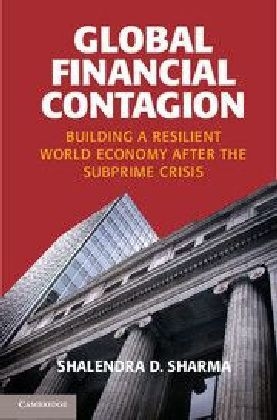
Global Financial Contagion
Cambridge University Press (Verlag)
978-1-107-60961-7 (ISBN)
This book is an authoritative account of the economic and political roots of the 2008 financial crisis. It examines why it was triggered in the United States, why it morphed into the great recession, and why the contagion spread with such ferocity around the globe. It also examines how and why economies - including the Eurozone, Russia, China, India, East Asia, and the Middle East - have been impacted and explores their response to the unprecedented challenges of the crisis and the effectiveness of their policy measures. Global Financial Contagion specifically looks at how the Obama Administration's policy missteps have contributed to America's huge debt and slow recovery, why the Eurozone's response to its existential crisis has become a never-ending saga, and why the G20's efforts to create a new international financial architecture may fall short. This book will long be regarded as the standard account of the crisis and its aftermath.
Shalendra D. Sharma is a Professor in the Department of Politics at the University of San Francisco. He is the author of several books, including China and India in the Age of Globalization (Cambridge, 2009), which was the winner of the 2010 Alpha Sigma Nu Book Award; Achieving Economic Development in the Era of Globalization (2007); The Asian Financial Crisis: Crisis, Reform and Recovery (2003); and Democracy and Development in India (1999), which won the Choice Outstanding Academic Title for 1999. He is also the editor of The Asia-Pacific in the New Millennium: Geopolitics, Security, and Foreign Policy (2000). Professor Sharma has published more than four dozen articles in leading peer-reviewed journals. He received his PhD from the University of Toronto.
Introduction; 1. The United States: why the trigger?; 2. The Bush and Obama Administrations' response; 3. From the American to the European crisis; 4. The Eurozone's sovereign debt crisis; 5. Russia: not an exceptional country; 6. China: from crisis management to rebalancing; 7. Japan, South Korea, and India: impact and recovery; 8. The Middle East amid the global financial crisis; 9. The great recession and the world's poorest; 10. G20 world: economic governance for the post-crisis world.
| Erscheint lt. Verlag | 14.10.2013 |
|---|---|
| Zusatzinfo | 34 Tables, unspecified; 13 Line drawings, unspecified |
| Verlagsort | Cambridge |
| Sprache | englisch |
| Maße | 152 x 228 mm |
| Gewicht | 550 g |
| Themenwelt | Wirtschaft ► Volkswirtschaftslehre ► Finanzwissenschaft |
| Wirtschaft ► Volkswirtschaftslehre ► Makroökonomie | |
| Wirtschaft ► Volkswirtschaftslehre ► Wirtschaftspolitik | |
| ISBN-10 | 1-107-60961-5 / 1107609615 |
| ISBN-13 | 978-1-107-60961-7 / 9781107609617 |
| Zustand | Neuware |
| Haben Sie eine Frage zum Produkt? |
aus dem Bereich


